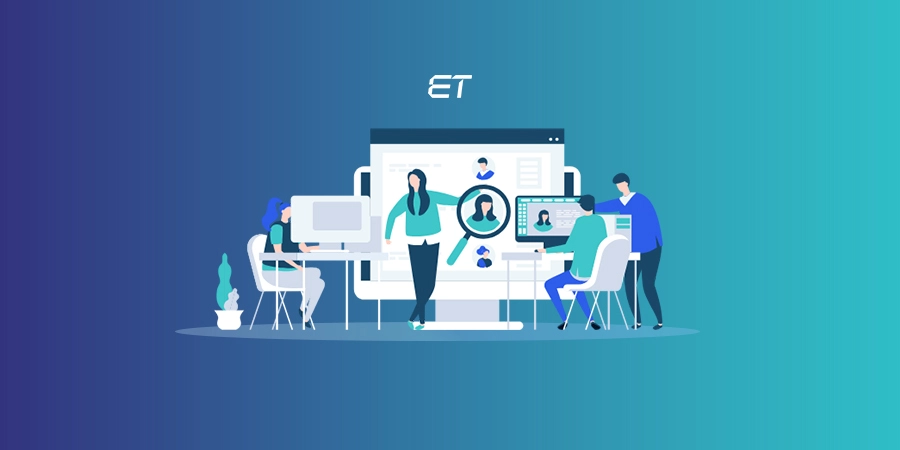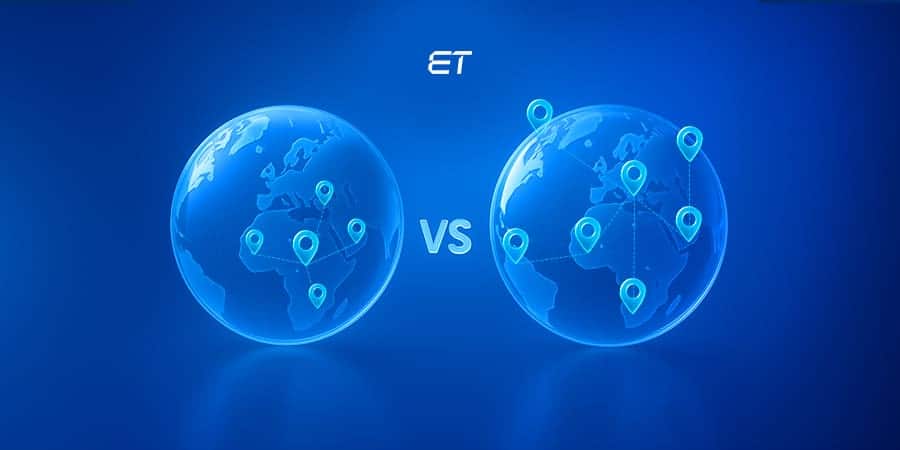
Winning the Talent War: Fixing Staffing Challenges in Tech Teams
- Solving staffing challenges needs careful assessment of business objectives and high-priority issues.
- Consistent upskilling, clear career paths, and feedback can prevent high turnover.
- Hiring from varied networks, considering non-traditional skills, and unbiased interviewing boosts team diversity.
- Structured onboarding plans can improve team preparedness and client retention.
Even if you have a groundbreaking product, you won’t scale without the right team. Your staff forms the backbone of your firm.
That’s why building a high-performing team is vital in today’s cutthroat tech landscape.
Get this: 55% of recruiters find it difficult to scout the best candidates, as per the 2025 State of Staffing Report. Staffing challenges like rising salary expectations and flexible work environments also prevent CTOs from building the best team.
This article talks about crucial challenges in staffing industry and actionable solutions for business leaders. We’ll also examine some case studies on how we solved staffing issues for our clients.
So, without any ado, let’s begin!
Need assistance to bridge your tech talent gap?
1. High Employee Turnover Disturbs Team Balance

One of the primary staffing challenges companies face is high turnover, which disrupts the team and project timelines.
When employees leave mid-project, teams scramble to reassign responsibilities, which hampers overall productivity. This transfer of duties affects team morale, project momentum, and may lead to overworked teams.
For CTOs and business leaders, training and onboarding new employees increases operational costs. This situation leads to delayed roadmaps and knowledge loss, which sets innovation back.
High turnover can occur due to these reasons:
- Lack of career development and unclear growth plans.
- Poor leadership and a lack of mentorship.
- Unrealistic workloads leading to extreme burnout.
- Toxic work environment and team culture.
- Unclear expectations and responsibilities.
Most importantly, better job offers from other companies also cause high-performing employees to leave their current positions.
Solution
To prevent this talent drain, gain clarity on the main causing factors.
For example, conduct detailed exit interviews with employees, asking them about their reasons for leaving the firm. Discuss these issues with existing team members and develop strategies to address them.
Then, follow these strategies:
- Conduct monthly check-ins to foster a transparent, feedback-driven culture.
- Define clear career progression paths and launch upskilling programs.
- Invest in time and project management strategies to avoid excessive workloads.
- Measure, repeat, and iterate strategies that work; discard the rest.
Additionally, connect with employees more frequently to understand their issues and offer actionable solutions.
2. No Flexible Work Models Drive Talent Away

The increasing demand for flexible work arrangements is among the most common staffing challenges currently. Almost 48% of employees prefer a hybrid work setup over a rigid 9-to-5 schedule. Additionally, 26% of workers would love to work entirely remotely.
So, if you’re unable to provide such flexible setups, you’ll probably lose top talent. Professionals value autonomy over where and how they work, as it enhances focus and productivity.
For employees residing far from their offices, the daily commute can drain their energy. Remote or hybrid roles eliminate daily hassles, allowing them to focus on work more effectively.
For CTOs and project managers, here are the consequences of inflexible models:
- Losing top-tier talent unwilling to relocate or follow traditional schedules.
- Current employees leaving, who feel constrained or burned out.
- Limited global hiring due to a lack of flexible systems.
Without flexibility, you risk lower engagement among skilled contributors who thrive in asynchronous or hybrid environments.
Solution
Start by analyzing how your team works best, not just where they work from. You don’t have to go fully remote all at once. Instead, build intentional and flexible team structures to ensure a smooth transition.
- Define roles that can operate in remote or hybrid mode, with clear expectations and outcomes.
- Use tools like Slack, Notion, Loom, and Trello for asynchronous collaboration and knowledge sharing.
Focus on outcomes by defining clear deliverables and deadlines, rather than just tracking hours.
Planning to hire and manage remote teams effectively?
3. Poor Workforce Diversity Prevents Team Growth

Lack of a diverse workforce is one of the core staffing challenges that impact innovation.
Rigid homogeneous teams often overlook the diverse range of perspectives required to develop inclusive, user-centric technology. As a result, the product fails to cater to varied customer groups, which negatively impacts user experiences.
For instance, suppose you launch a budgeting app, developed by an all-male, urban team. The dev team might miss features essential to rural users and women. These features can include offline access, regional language support, and shared family budgeting.
Thus, it will hinder the product’s adoption outside developed cities or suburbs.
Solution
Start by expanding where and how you source talent with these approaches:
- Hire remote tech professionals and outsource IT projects to access diverse talent.
- Partner with bootcamps, community colleges, and organizations focused on underrepresented talent.
- Redefine job criteria to include non-traditional skills like problem-solving, adaptability, and leadership experience.
- Promote inclusion through employee resource groups, mentorship programs, and comprehensive anti-bias training.
- Include diverse interviewers to reduce bias and ensure fairer assessments.
So, addressing diversity challenges in staffing industry via these steps improves the employee’s work experience.
4. The Gap Between Technology and Talent

Rapid technological developments are among the most vital staffing industry challenges in 2025, as teams struggle to keep pace.
From emerging enterprise AI tools to sophisticated cybersecurity attacks, the skills required to stay competitive are constantly shifting. For business leaders, this creates a widening gap between what their teams can do and what modern tech stacks demand.
A team with outdated skills can cause slower development cycles, increased technical debt, and potential project failure. It also makes hiring more challenging, as candidates with up-to-date expertise are both scarce and in high demand.
So, organizations failing to upskill or reskill their teams risk falling behind in delivery and innovation.
Solution
Solving staffing challenges regarding upskilling your team requires a proactive approach:
- Invest in and encourage continuous learning through online platforms like Pluralsight, Coursera, and Udacity.
- Allocate time for R&D sprints where engineers can experiment with new tools or frameworks.
- Map current skills to future needs and create training programs to cover the gaps.
- Conduct assessments to track the learning progress of team members.
Additionally, conduct regular cross-functional learning sessions, such as tech talks or internal demos. Teams can share tools, workflows, and their learning experiences with one another.
5. New Client Acquisition Issues and Team Preparedness

Around 23% of the firms state that acquiring new clients is among the leading staffing challenges in 2025. It’s because each new account brings new expectations, deliverables, requirements, and unexpected workloads.
Securing clients in this competitive market is challenging, but retaining them is even more so. The problem here is about team readiness and adapting to new requirements.
Without the right mix of skills, domain knowledge, and capacity, even your top engineers can burn out. Moreover, rushed hiring to meet client expectations often results in mismatched hires who aren’t suitable.
As a result, timelines slip, and the quality of both new and existing projects can suffer.
Solution
Focus more on workforce planning, aligning talent with your business pipeline to handle future needs.
- Align sales and delivery teams early so that hiring plans reflect upcoming client loads.
- Maintain a talent pool of trusted freelancers and software development partners to tap into when onboarding new clients.
- Develop structured onboarding playbooks with clear processes, tools, and expectations to help new hires and clients.
- Create extra team capacity to handle unexpected workloads, ensuring critical projects stay on track during urgent demands.
By scaling with new clients with these strategies, you protect both team health and delivery excellence.
Hire seasoned developers. Onboard new clients with ease.
Overcoming Staffing Challenges: Success Stories from the Field

Let’s look at some real-world cases where we helped clients by addressing their staffing challenges. We’ll explore how our staff augmentation and on-demand services boosted teams.
How We Expanded a NYC Marketing Agency’s Team Capabilities
Our client, a successful NYC-based marketing agency, was growing rapidly and acquiring new customers. They needed to expand their team to increase bandwidth and software development capabilities.
Their challenge was finding top talent for easy ramp-up and ramp-down of developers based on evolving needs.
That’s where our team at eLuminous Technologies stepped in and assisted them through tailored services:
- Provided a small dedicated IT team and a flexible staff augmentation model to build client confidence.
- Enabled flexible team ramp-up and ramp-down based on evolving business needs.
- Provided a dedicated team with diverse skills, ensuring comprehensive project coverage.
- Reduced client’s development costs by 60% through a flexible hiring model.
As a result, the client completed two projects successfully with improved sales and conversion rates, reaching USD 10 million in profits.
What are the essential learnings here for CTOs?
- Choose providers who can handle development, integration, and ongoing maintenance.
- Begin with a small, focused team to demonstrate capabilities and build confidence before scaling.
- Opt for flexible staffing models for dynamic team adjustments and optimizing costs.
Remember, only trustworthy partners can extend your team’s capabilities.
Discover the real costs of scaling your dev team.
Elevating A Client’s Employee Growth and Evaluation Systems
Our client was a performance monitoring agency that needed a structured system for assessing the employee growth of other firms. As upskilling teams is among the core staffing challenges for CEOs, they needed a robust system to tackle it.
The client was unable to evaluate employees due to a lack of standardized metrics. Inefficient manual review systems and the lack of a learning resource repository were other issues they faced.
Here’s how our team helped them:
- Provided an intuitive dashboard to present review data, making performance analysis efficient and clear. The system allowed managers to upload team assessment questions.
- Implemented a learning module, offering a centralized repository of resources for continuous employee skill enhancement.
- Included a manager review system for offering timely, constructive feedback.
Our services improved performance assessments by 20% and employee upskilling by 25%.
What are the essential learnings here for CTOs?
- An accessible, structured learning platform is essential for continuous skill development.
- Feedback and skill monitoring are essential for an employee’s upskilling.
- Use assessment data to guide reskilling efforts.
These steps enable you to retain top talent and reduce hiring pressure.
Parting Thoughts
Staffing challenges are no longer just HR concerns, but crucial aspects that impact project deliverables and innovation. From high turnover and a lack of diversity to skills gaps, you’ll need individualized strategies to tackle them.
Steps such as frequent employee check-ins, flexible work arrangements, knowledge-sharing sessions, and workforce planning can fix these problems. However, the key is to align staffing strategies with business goals while keeping all teams involved.
Solve Staffing Issues with Ready-to-Go Tech Talent
Frequently Asked Questions
1. Which staffing challenges are common during recruitment?
Recruitment staffing challenges include finding candidates with the appropriate technical skills, cultural fit, and communication skills. Offering the ideal work environment is also a challenge.
2. What role does company culture play in retaining top technical talent?
An organization’s culture helps overcome staffing challenges of retention by fostering a sense of belonging, trust, and purpose.
3. How can leadership communication help teams navigate through ongoing staffing challenges?
Effective leadership communication builds trust, sets clear expectations, and keeps teams aligned. This helps address staffing challenges like high turnover, client acquisition, and skill development.



